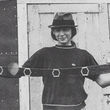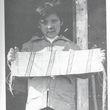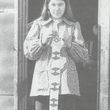Articles written by Tehanetorens
Sorted by date Results 1 - 21 of 21
Tuscarora Taken In Belt
This belt has been called the Six Nations Brace Belt and records when the Tuscarora Nation was taken into the Iroquois Confederacy. Each diagonal...
Iroquois-Ojibway Friendship Belt
This belt is a friendship belt, and the symbols on the belt represent two nations joined together by the Path of Peace. One square represents the...
Penobscot-Onondaga Belt
Many people, including many Indian people, think that the Iroquois Confederacy was formed for the exclusive benefit of only the original Five...
William Penn Belt
This is the original belt delivered by the Lenni-Lenape (Delaware) Chiefs to William Penn at the celebrated peace treaty under the elm tree at...
First William Penn Belt
This belt was given to the Indians before they entered the Council House where the treaty was to be made. It was a token of amity and good faith. The...
Huron Alliance Belt
After the Hurons were conquered by the Five Nations in 1650, many were taken in by the Iroquois. Whole villages were adopted by the Senecas and...
Champlain-A Record Belt
French Invasion—This belt was made to keep in memory the expeditions of the French against the Five Nations. The Iroquois never forgave (and the F...
Two-Row Wampum
This belt symbolizes the agreement and conditions under which the Iroquois welcomed the white peoples to this land “You say that you are our Father a...
The Coming of the People with White Faces-A Record Belt
This belt records the condition of the early white people who came to the Iroquois Country. The strong outside diagonal lines supporting the weak...
Emigration Belt
It is provided thus: When a person or family belonging to the Five Nations desires to abandon their nation and the territory of the Five Nations,...
ADOPTION
It is provided thus: The father of a child of great comeliness, learning ability or specially loved because of some circumstances may, at the will of...
Cultural Corner
It is provided thus: When a candidate chief is to be installed, he shall furnish four strings of shell wampum one span length bound together at one...
Adodarhoh Belt
It is provided thus: To you, Adodarhoh and your cousin chiefs, fourteen of you altogether, this shall be your duty. You shall keep The Confederate Council Fire (Government) clean all around. You...
THREE SISTERHOOD
Long ago when the Mohawk People lived in the villages beside the Mohawk River in what is now New York State, the Mohawk Clans lived in separate...
BELT OF THE UNITY OF THE CLANS
This belt was one of the Constitutional Memorials and signified the essential unity of the clans “who sat opposite each other about the Fire.” The...
Peace Pact Wampum Strings
Continued from last week It is provided thus: A bunch of wampum strings, three spans of the hand in length, the upper half of the bunch being white an...
Wampum Strings
Continued from last week Purple wampum used in calling a mourning council or condolence for raising a secondary chief or war chief. Invitation Wampum...
Wing or Dust Fan of the Confederate Nations
Continued from last week This belt is the widest belt known. It represents an ever-growing tree. It is provided thus: I am Dekanawidah and with the...
Wampum Belts
Continued from last week Hiawatha (Ayonwatha) Belt The Hiawatha (Ayonwatha) Belt, a broad dark belt of wampum of thirty-eight rows, having a white... Full story
Wampum Belts
Continued from last week Invitation wampum for a civil or religious council is still used. A small stick attached to the wampum strings and covered...
Wampum Belts
To most people a wampum belt means any beaded belt made by Indians. Glass beads were introduced by white traders, and with these the Indian people did... Full story


























